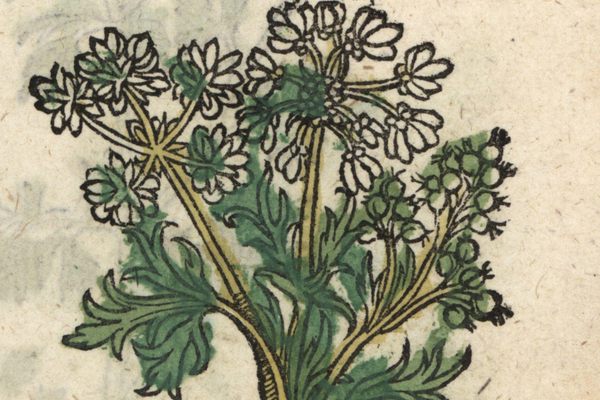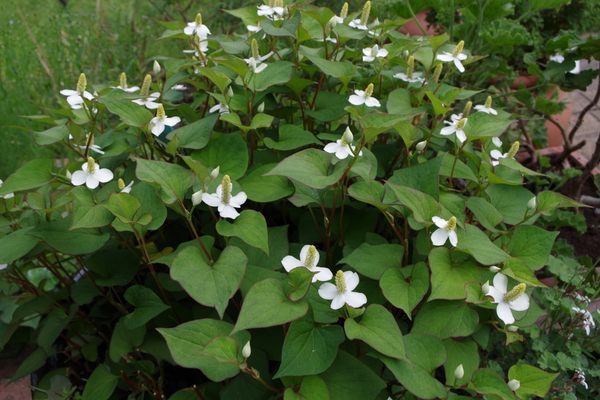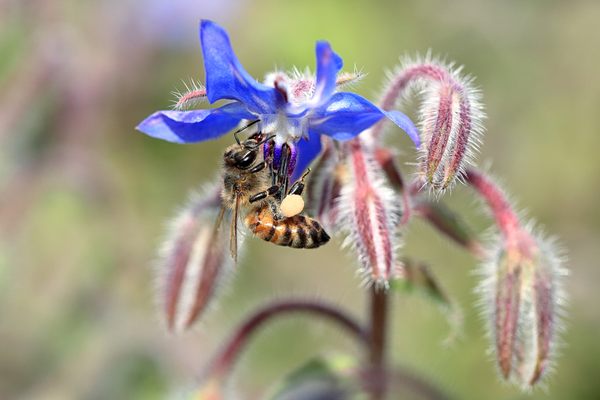What Is a Bay Leaf, Exactly?
There are at least six different answers.
THIS ARTICLE IS ADAPTED FROM THE AUGUST 26, 2023, EDITION OF GASTRO OBSCURA’S FAVORITE THINGS NEWSLETTER. YOU CAN SIGN UP HERE.
Whether you’re making a recipe from India, Jamaica, or Spain, you’re likely to encounter bay leaf in the ingredients list. Just make sure you know which kind of bay leaf the recipe calls for.
The term “bay leaf” originally referred to foliage from the bay laurel tree. Bay laurel’s distinctive herbal flavor, bitter and slightly piney, has been used as a seasoning for millennia. But the name has become shorthand for several other leafy spices from different trees.
All of them are used to flavor food, either added to dishes whole or sometimes ground into a powder. However, the similarities often end there, and one type of bay leaf doesn’t necessarily make a good substitute for another.
Gastro Obscura has the lowdown on six different spices all confusingly known as “bay leaf,” including where they come from, what they taste like, and how they are used.
1. Bay laurel (Laurus nobilis)

This is the most common bay leaf in the Americas and Europe, especially in the Mediterranean where it originated. The ancient Greeks and Romans used laurel leaves in food and medicine and to crown winners of competitions, the source of the word “laureate.” Laurel was the symbol of the god Apollo, whose oracle at Delphi held a laurel branch as she prophesied, in addition to chewing the leaves and inhaling their smoke.
Bay laurel’s name has an ancient etymology, unconnected to “bay” as in a body of water. Old Bay seasoning contains powdered bay leaf, but it was actually named after a shipping line on the Chesapeake Bay, a nod to its Baltimore origins. However, laurel’s long importance in Europe has given rise to names such as Laura, Laurence, and Daphne, which means “laurel” in Greek.
Bay laurel is also used in China, particularly in Sichuan cuisine, and in some Filipino recipes with Spanish influence. Turkish bay leaf is a variety of the same species known to be especially mild and sweet.
Whole bay leaves are often removed from food before serving, which has led to a misconception that they are poisonous. It’s true that bay leaves taste unpleasantly intense when chewed (unless you’re an oracle), but they are safe to eat, as is bay leaf oil and the berrylike fruit of the tree. Chefs remove the tough, stringy leaves from stews, sauces, and mixed rice dishes simply because they’re a choking hazard.
2. Indian bay leaf (Cinnamomum tamala)

The typical bay leaf of South Asia has a totally different flavor from bay laurel. Luckily, there’s an easy way to tell these leaves apart: the veins.
Bay laurel leaves have one central vein, with smaller veins branching on each side. Indian bay leaves have three parallel veins from stem to tip. Indian bay leaves are also more narrow and flatter than bay laurel leaves, and can be much larger.
As you may guess from its scientific name, Indian bay leaf is closely related to the cinnamon tree, and its sweet flavor also resembles cinnamon. Like bay laurel, Indian bay leaf has a long history in food, especially in northern India, where the leaves are commonly included whole or powdered in spice blends such as garam masala. Indian bay leaves are also used in Ayurvedic medicine and to make scented oils.
The modern Hindi name for this spice, tejpatta, means “pungent leaf,” but the ancient Sanskrit name was tamalapattram, or “dark tree leaves.” When the dried leaf was traded west to Europe, the ancient Greeks misunderstood “tamalapattra” as “the malabathrum,” and malabathrum became the spice’s name in Europe for centuries thereafter.
3. Indonesian bay leaf (Syzygium polyanthum)
The bay leaf of Indonesia is known locally as daun salam, meaning “peace leaf.” While the previous two plants on this list belong to the laurel family, Indonesian bay is a member of Myrtaceae, the myrtle family. It’s related to clove, which is also native to Indonesia.
Dried Indonesian bay leaves are delicate and brittle, with little scent until cooked. When fried in oil or crumbled into hot liquid, they release a sweet fragrance that is both citrusy and earthy, resembling cinnamon and cardamom.
These leaves are used in soups and curries as well as rice dishes and milk puddings, particularly in the southern and western parts of the archipelago, such as Sumatra, Bali, and Java. Like bay laurel leaves, they are often removed before serving because of their bitter taste.
4. West Indian bay leaf (Pimenta racemosa)

Also called sweet bay or spice tree, West Indian bay is another myrtle relative native to the Caribbean, like its cousin allspice. Every part of the plant is poisonous except for the shiny, oil-rich leaves, which have a complex, spicy flavor and aroma reminiscent of nutmeg and clove.
In the Caribbean, these intensely fragrant leaves are used as a natural insect repellent and air freshener. Fresh, dried, or powdered, they also flavor dishes from rice to spice cakes to pickles. Tea made from the leaves is said to help with high blood pressure and other ailments.
The best-known use of West Indian bay leaves is bay rum, first made on the island of Saint Thomas in the late 19th century. Bay rum consists of rum infused with West Indian bay leaves and sometimes berries, as well as other spices. Intended for external use as a cologne and aftershave, bay rum is toxic if consumed, but contains enough alcohol that some desperate souls resorted to drinking it during Prohibition.
5. Mexican bay leaf (Litsea glaucescens)
Mexican bay leaf is a type of laurel native to North America, known to the Aztecs as ecapatli, meaning “wind medicine.” Indigenous peoples used the plant in remedies long before the Spanish arrived. Later, it was called falso laurel, “false laurel,” or laurel de la sierra, “mountain laurel,” to differentiate it from bay laurel.
Mexican bay leaves resemble bay laurel in flavor, but they’re milder and more subtle. In Mexico, they’re used whole in soups, marinades, and slow-cooked meat dishes. Traditionally the branches were gathered to weave bouquets and crosses for Palm Sunday, a custom first celebrated with bay laurel in parts of Europe. Over-harvesting for this purpose and for food has threatened the wild Mexican laurel, which is now protected by law in Mexico.
6. California bay leaf (Umbellularia californica)

California bay has a lot of colorful English names, including “headache tree” and “balm of heaven.” Another North American laurel, it’s native to Pacific coastal forests from California to Oregon. The leaves are longer and more narrow than bay laurel leaves, with a similar but much stronger scent and flavor.
Unlike other laurels, California bay contains umbellulone, a compound that can induce headaches. This is where the name headache tree comes from, although ironically, the plant is also used in indigenous headache remedies.
Indigenous peoples within the tree’s native range make the leaves into a medicinal tea or topical antiseptic, and add them to stores of acorns to keep insects away. California bay’s avocado-like fruit is edible, and the round pits inside, known as “bay nuts,” can be roasted and eaten whole, or powdered and prepared into a coffee-like beverage.
Gastro Obscura covers the world’s most wondrous food and drink.
Sign up for our regular newsletter.

















Follow us on Twitter to get the latest on the world's hidden wonders.
Like us on Facebook to get the latest on the world's hidden wonders.
Follow us on Twitter Like us on Facebook